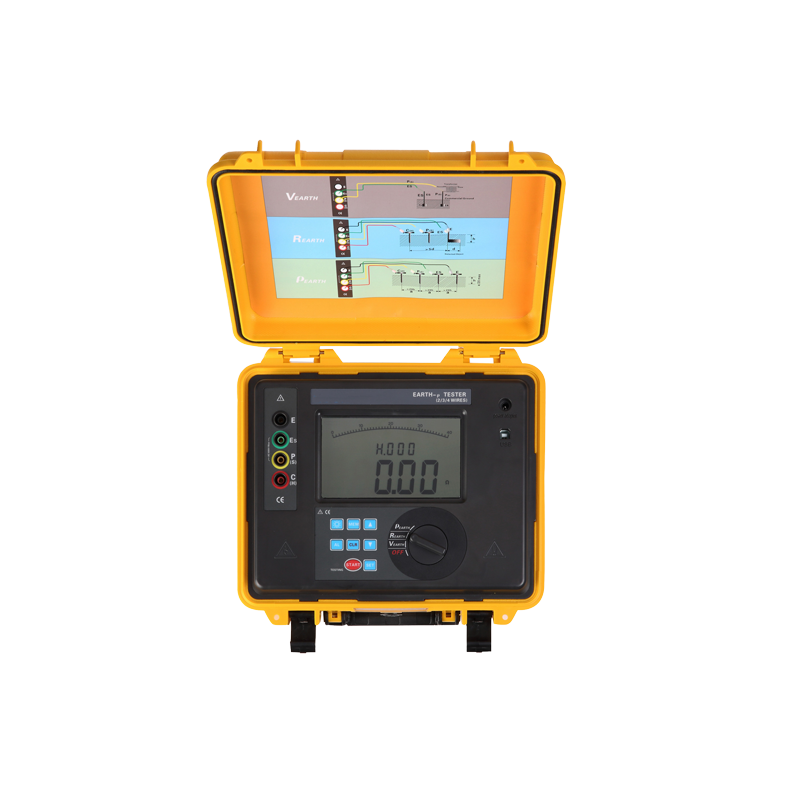In sandy and rocky soils with high soil resistivity, in order to meet the requirements of low grounding resistance, a grounding network composed of multiple grounding bodies connected in parallel is often used. But sometimes a large amount of steel is used, and the ground area is large. It is often difficult to achieve the required ground resistance.
At this time, the earth resistivity of the soil near the grounding body can be reduced, and the purpose of reducing the grounding resistance can also be achieved. How to use a ground resistance tester in a harsh environment? It is recommended to try the following methods.

GDCR3100C Earth Resistance Meter
1. Use soil with low resistance coefficient (i.e. soil replacement method).
The soil with high resistance coefficient can be replaced by clay, peat, black clay and sandy clay, and coke and charcoal can also be used if necessary. The replacement range is within 1-2m around the grounding body and within 1/3 of the length of the grounding electrode near the surface. After this treatment, the grounding resistance can be reduced to about 3/5 of the original.
2. Using salt and other manual treatment methods
Add salt, coal slag, carbon dust, furnace ash, coke ash, etc. to the soil around the grounding body to improve the conductivity of the soil. Because table salt has a good effect on increasing the soil resistance coefficient, it is less affected by seasonal changes and the price is low.
3. Use external grounding
Especially in hilly areas, when the grounding resistance value is small and it is difficult to reach locally, if there is water or low resistivity soil nearby, it can be used to make grounding electrodes or lay underwater grounding grids. Then use a ground wire such as a flat steel strap as the external ground. However, the grounding resistance tester needs to pay attention to that the external grounding device should avoid the sidewalk to prevent step voltage electric shock; when crossing the expressway, the burial depth of the external lead should be greater than or equal to 0.8m.
4. Conductive concrete
Carbon fiber is mixed into the cement and used as a grounding electrode. For example, about 100 kg of carbon fiber is mixed into 1 m3 of cement to make a hemispherical (1 m diameter) ground electrode. After measurement, its power frequency grounding resistance (compared with ordinary concrete) can usually be reduced by about 30%. This method is commonly used in lightning protection and grounding devices. In order to further reduce the impact grounding resistance value, the needle-shaped grounding electrode can also be embedded in the conductive concrete at the same time, so that the discharge corona can continuously fluctuate from the needle tip and the carbon fiber, and the grounding has a significant effect. Influence and reduce the impact grounding resistance value.
5. Chemical treatment of drag reducing agent
The drag-reducing agent with carbon powder and quicklime as the main raw materials does not contain dielectric substances, will not be lost by groundwater, and can be used in the soil for a long time. Therefore, long-term pollution-free, stable low grounding resistance (about 1/2 lower than that before treating the soil with resistance agent) can be obtained. For hard rock slabs, the method of adding or reducing inhibitors in the embedding is very effective, and the grounding resistance of the grounding resistance tester can be reduced by about 40% compared with that of embedding alone. This method sprinkles powdered drag reducer or long-term drag reducer in the ditch where the ground wire is excavated, and then backfills the old soil, which can achieve good results.
Post time: Jul-18-2023
